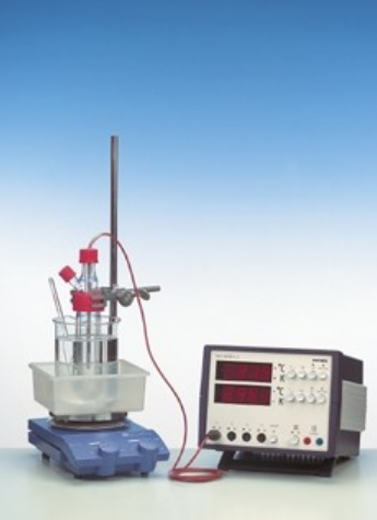Determination of molar masses via a measurement of the freezing point depression (cryoscopy)

In order to train and demonstrate the determination of molar masses by way of a measurement of the freezing-point depression, urea or hydroquinone are used as test substances. The cryoscopic constant of water is determined from the freezing point depression.
- With detailed experiment guide
- Compact, easily transportable setup
- Simultaneous display of current temperature and temperature difference
Beaker, 1000 ml, low-form
Porcelain plate f.desiccator150mm
Temperature probe, immersion type, Pt100
Magnetic stirring bar 15 mm, cylindrical
Right angle boss-head clamp
Wash bottle, plastic, 500 ml
Hydroquinone 250 g
Pellet press for calorimeter
Gasket for GL25, 12mm hole, 10pcs
Pasteur pipettes, 250 pcs
Mortar with pestle, 150 ml, porcelain
Protective sleeves f.temp.probe,2
Magnetic stirring bar 30 mm, cylindrical
Universal clamp
Desiccator, vacuum, diam. 150 mm
Denaturated alcohol (spirit fo
Magnetic stirrer with heater MR Hei-Standard
Weighing dishes, square shape, 84 x 84 x 24 mm, 25 pcs.
Pipettor
Microspoon, steel
PHYWE Temperature meter digital, 4-2
Magnetic stirring bar, 50 mm, cylindrical
Rubber caps, 10 pcs
Watch glass, dia.80mm
Apparatus for freezing point depression
Dish, plastic, 150x150x65 mm
Urea, 250 g
Supp.rod stainl.st.,50cm,M10-thr.
Glass rod,boro 3.3,l=300mm, d=7mm
Volumetric pipette, 50 ml
Water, distilled 5 l
- Cryoscopic constant
- Freezing point depression
- Molar mass
